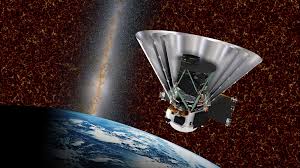NASA's SPHEREx Mission
Current Affairs International IssuesPosted by newadmin on 2025-02-27 08:49:14 |
Share: Facebook | Twitter | Whatsapp | Linkedin Visits: 18

NASA's SPHEREx telescope is scheduled for launch on February 27, 2025, with the ambitious goal of creating the most detailed and vibrant map of the universe. The mission is designed to explore cosmic history and investigate the potential for life beyond Earth. Over the course of two years, SPHEREx will collect data on galaxies, stars, and life-forming molecules, significantly enhancing our understanding of the cosmos.
SPHEREx, which stands for Spectro-Photometer for the History of the Universe, Epoch of Reionization, and Ices Explorer, offers a unique approach to space observation. Unlike traditional telescopes, it will divide light into 96 bands, allowing for an in-depth analysis of cosmic objects. Unlike the James Webb and Hubble telescopes, which focus on specific regions, SPHEREx will scan the entire sky, providing a more comprehensive view of the universe.
One of the primary objectives of the mission is to study cosmic inflation, the rapid expansion of the universe following the Big Bang. Understanding this phenomenon is essential for grasping the universe’s evolution. By mapping a billion galaxies, SPHEREx will test various theories of inflation and provide valuable insights into the nature of the cosmos.
Another key aspect of SPHEREx’s mission is the search for water and biogenic molecules within the Milky Way. These essential life-forming compounds are found in icy particles within the cold regions of the galaxy. By identifying and mapping these regions, the telescope will contribute to the ongoing search for habitable environments beyond Earth.
SPHEREx will operate alongside other space telescopes, including the James Webb Space Telescope. While James Webb focuses on capturing high-resolution images of specific celestial objects, SPHEREx will provide a broader perspective, making its data invaluable for complementary studies in astrophysics and astrobiology.
Throughout its mission, SPHEREx is expected to capture approximately eight million spectroscopic images, revolutionizing the way scientists study cosmic history and the origins of life. The data collected will allow astronomers to identify patterns, detect anomalies, and refine our understanding of the conditions necessary for life. The findings from this mission could reshape our knowledge of the universe, offering new insights into its history and the potential for life beyond Earth.
Search
Categories
Recent News
- Cyberabad's Traffic Revolution: Citizens Take the Wheel
- Hyderabad Police Shake-Up: Officers Relocated Amid Bribery Scandal
- Bihar's Top Cop Opens Doors to Public Grievances
- Hyderabad Gears Up for Presidential Visit: Traffic Diversions Announced
- Hyderabad Expressway Gridlock: Three-Car Pile-Up Causes Chaos
- Hyderabad Gears Up: Security Measures for Presidential Visit
- Hyderabad's Rs 23 Lakh Scam: Fake Trading App Dupes Investors
- Pinkathon Hyderabad: Empowering Women, One Step at a Time
Popular News
- Navigating IPO Market Dynamics Amid Volatility and Regulatory Changes
- Innovative Green Practices and Environmental Initiative
- Massive Worldwide Microsoft Outage Disrupts Multiple Sectors
- తెలుగుదేశం పార్టీ - పేదరికాన్ని నిర్మూలించడంలో వాగ్దానం
- Universities Embrace Remote Learning Technologies Amidst Ongoing Pandemic